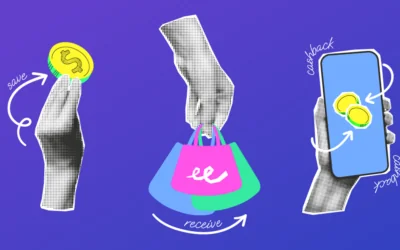There is an increasing pressure for banks to increase customer retention, adapt to rising expectations and gain competitive advantage. Coupled with the shift from offline to online; the financial services industry has experienced a revolutionary growth in demand for personalized digital banking solutions. However, many argue whether it deprives customers of human interaction. So, how do banks overcome the challenge of digitizing their services to bring comfort while staying close to their most loyal clientele? Here is where conversational banking comes into play.
What is conversational banking?
Conversational banking allows real-time interaction between banks and customers via AI and automation. This way, customers benefit from the digital convenience and natural conversations, and banks track and learn more about how to tailor their experiences.
Why conversational banking is trending
Conversational banking addresses a variety of challenges that banks are experiencing daily. For instance, retaining and acquiring new customers is expensive, so meeting their constantly evolving expectations and staying up to date with these has become a real challenge. Combined with new regulatory frameworks and movements in the competitive arena to keep a close eye on, banks must seek for new ways to transform their digital offerings timely, securely, and relevantly
“Conversational AI can increase revenue by 16%, reduce operating expenses by 21%, and increase customer ratings by 35%.” – The Financial Brand, 2022.
Benefits of conversational banking
Unlimited accessibility and timesaving
Customers value having self-service options available to them. With conversational banking, they can obtain quick answers to their questions and benefit from higher quality service as their experience becomes more personalized at every stage. With live chats, mobile apps, or even chatbots; customers no longer need to waste time going to their banks whenever they have a financial request. To be perceived as “advisors that customers can trust”, it is essential to create active engagement through
relationships, awareness and anticipating customers’ needs going beyond the financial aspect alone whilst accompanying them in day to day activities.
Innovation
Conversational banking is, with no doubt, one of the most booming trends in the financial services market. As we explore in our Behavioural Science in Banking article, we as humans are attracted to novelty. Consequently, providing new and trendy financial solutions create more engaging, satisfactory experiences as we can feel we are provided with services no other banking customer has.
Increased customer engagement and loyalty
Having more touch points with their banks increases the likelihood of engaging with such, leading to longer-term relationships. Customers feel more valued and rewarded if they feel they’re being taken care of with new, innovative banking services or features, which results in improvements in customer satisfaction and longer customer lifetime. Keeping customers satisfied doesn’t only reduce churn rates, but also has other indirect positive impacts on the bank’s brand like word-of-mouth marketing.
Keeping customers engaged with hyper-personalized communication is beneficial for both clients and banks. When properly implemented, such solutions help different customer segments (e.g., Gen Z, Mass, Business) feel treated as individuals instead of components of macro-clusters. Customers show greater responsiveness to services that are aligned with their specific needs and that adapt to their real-time behavior. Simultaneously, banks that develop customer centric value propositions show greater results in customer satisfaction, retention and churn, translating into increased customer lifetime value (CLV) and additional direct and indirect revenues.
Lower costs
Online messaging channels are, in fact, compatible with automation. Providing the customer with other communication tools does not only benefit the end customer with decreased response times or increased personalization; but also has an impact on the bank’s operating costs. Using automation models such as workflows or customer support chatbots, the bank can provide more support volume without having to hire more personnel. As a result, the bank will streamline its processes and its employees can spend more quality time on each customer.
Conclusion
Conversational banking can create longer-term customer relationships, increase engagement and satisfaction, and result in greater ROI for banks. Bringing services closer to customers and adapting to new market trends can help banks scale up their businesses, but they must partner with fintechs that will help them accelerate the process. If you are interested in learning more about how partnering with a fintech company can be beneficial for your bank, request a demo and one of our sales reps will get back to you as soon as possible.



